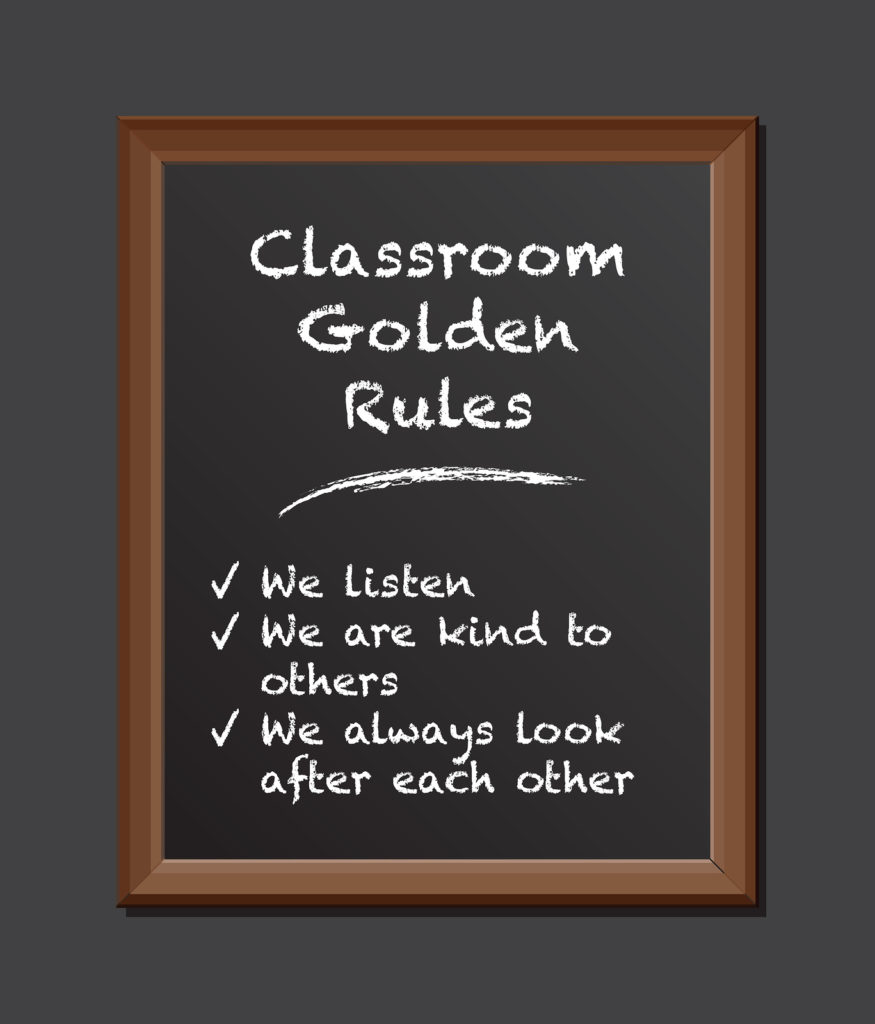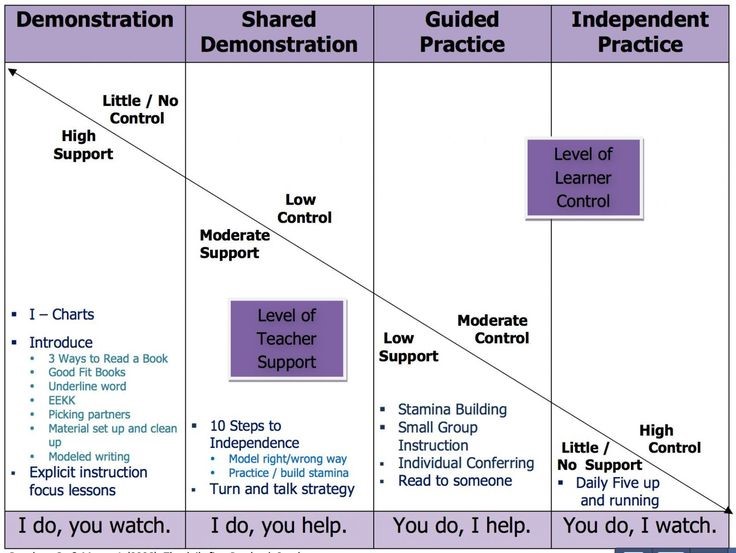6 Questions to Tackle in Managing Classroom Procedures
11/14/2017

How can Finland students, touted as one of the highest-ranking OECD (Organization for Economic Cooperation and Development) countries in education, score as high as they do on the PISA (Programming for International Student Assessment) data when they are in school 400 hours less than students in America? This is answered with a multitude of retorts, but easily stated Finland educators believe, "Less is more!" American students spend roughly 1,080 hours a year with a teacher "doing school." Much of America's educational philosophy has been "More is better." In fact, there are many schools adding hours and days into their current school calendars. What can we learn from the Finnish education system? A lot!
Classroom routines and procedures are the backbone of a classroom. Without it, chaos reigns and increased student behaviors are visible, as well as decreasing or stagnant academic scores. When effective routines and procedures are put in place, students are more successful in all areas, specifically academic and socio/emotional learning.
Charlotte Danielson's teacher evaluation model does not necessarily state we need to overhaul our American educational approach. What she does create is a need to use the already delineated time in a more purposeful and productive manner. The following six questions will support the transition of a teacher going from "proficient" to "exemplary."
#1 - What Routines and Procedures Are in the Classroom?
Effective classroom teachers think of the smallest procedures and routines to make their students successful, and yet they teach their students to take initiative and be problem solvers. They understand there is a fine balance between over-teaching an abundance of routines and procedures, as well as teaching enough of them to save time, ensure safety, and expect academic progress by all students. When these students continue having problems with a specific area of the classroom, they propose a new routine or procedure to their teacher and peers. They are constantly striving for a more effective and efficient learning environment.
Exemplary teachers have routines and procedures in the classroom that have been taught much the same way as the academic content. These teachers continue to teach them to mastery throughout the school year. They even use a clock to determine efficiency as well as effectiveness. If they see a bottleneck procedure or traffic-jam routine, they empower students to make suggestions to change it. Exemplary teachers understand that when they empower, they are gradually releasing responsibility and ownership back to the students. They believe that independent problem-solvers are in charge of their own education and teachers are merely there to facilitate this transfer of responsibility and ownership.
Here is a list of common routines and procedures from the Scholastic article that is 15 years old, but still quite relevant, "30 Classroom Procedures to Head Off Behavior Problems" by Bonnie P. Murray (2002©)
#2 - How Well Do the Students Know the Routines and Procedures in the Classroom?
After a procedure or routine has been taught, it must be reviewed, modeled, and revisited routinely. Exemplary teachers empower the students to support in making the decisions when these need to be reviewed. Students police themselves but do so respectfully and with kindness. When a student chooses to not follow a routine or procedure and another student has tried to support, a procedure is in place to inform the classroom teacher, "Mr. Johnson, we were working on lining up, but we are still not as efficient as we could be. Can you support us?" Tattling can be eliminated and replaced with reporting. A tattling student would have stated, "I asked Jimmy to get in line, but he said ‘No,' Mr. Johnson." This form of tattling sets a student up to be defensive and pits students against each other, which could create a toxic environment.
The exemplary teacher understands it is them ultimately that determines the success of routines, procedures, and solving any issue of student reporting failures. Rules should not be confused with routines and procedures. Rules carry out the spirit of the classroom, while routines and procedures create the structure of the learning environment pertaining to management of materials, learning structures, and safety measures.

A classroom that "runs itself" is touted as one that knows the classroom routines to the point that they are automatic and can be taught to other students and even guest teachers (substitutes). Observation of such a class is fun to watch as students work seamlessly at the job or task assigned. Students know how to support each other in making sure every student gets what they need. When a problem arises, other students support in "going to solution," rather than spending time on the problem or solely letting the teacher deal with the situation. Exemplary teachers do not place blame on students who cannot handle this learning environment, they merely think with a growth mindset, "They are not ready….yet!"
Exemplary teachers spend a lot of time up front teaching, modeling language and actions, using students to role-play, and making visual posters or charts when teaching procedures or routines. These teachers know that these may change as a need arises. They allow students to support the editing of the routines and procedures. Master teachers understand that the better these are taught the more time students will get in the end.
Teachers who score at the unsatisfactory or basic levels on Charlotte Danielson's model may feel spending time on teaching procedures and routines is a waste of instructional time or even deem it is not important. Many of these low scoring teachers feel they should have been taught these procedures and routines in the past grades or classrooms. They also blur the lines between routine, procedures, and rules. This is confusing for students. Teachers in these classrooms will not get as much curriculum covered or have students score as high as they could if they had well established procedures and routines.
If you love observing great instruction by stepping into a classroom where students have mastered a set of procedures and routines you know it is pure art! Observing what the teacher is doing while students manage their own learning environment can be revealing. Many of us wonder how a teacher can have so much time to support students individually, work on classroom projects, celebrate students, and more. It starts with students mastering procedures and routines.
#3 - Do Students Know the Difference Between Rules, Procedures and Routines?
One of the most indistinct educational practices we see across classrooms is the belief that rules, procedures, and routines are all the same. Students are confused and break more "rules" when they do not follow a procedure or routine. Rules should be devised to carry out the spirit of the classroom or school. Procedures and routines are created for students to use to access learning or to get a specific need met.
Here are some examples of rules that carry out the spirit of the classroom:
- Be Kind
- Be Respectful
- Be Responsible
- Be Safe

The biggest difference between rules, procedures, and routines is what educators do when one of these are not followed by students. A student that does not follow a procedure or routine must be re-taught, not punished, nor have consequences. They simply must do it again, and again, and again. A teacher must be creative with a student that continues to struggle with a routine or procedure. If it becomes a pattern over time, then they may be breaking one of the rules of the classroom purposely. All behavior is a chance for us to teach and reteach. Exemplary teachers understand that there are two celebrations coming whenever a routine or procedure is re-taught: 1) student ownership of his or her actions, and 2) the student doing the correct thing. For example, a student running down the hallway. They must go back and do it again for safety. They should not be punished for breaking a procedure.
When a rule is broken an educator has a chance to reteach what the spirit of the classroom looks like, feels like, and sounds like. Many teachers will argue what consequences should come next. This is where teaching philosophy and the school's philosophy play a role in determining what happens next. From Lee Cantor's Assertive Discipline, to the new push for restorative justice, educators must be on the same page. When consequences are given, it is best to track if the duration, frequency, or intensity decrease. If at least one of these facets are not decreased, educators must review their effectiveness with teaching the rules of the classroom and school.
#4 - How Can an Educator Transition from a Teacher-Managed Classroom to An "Empowered" Student-Managed Classroom?
"Don't sweat the small stuff," is a famous line referring to people being able to see the big picture. Unfortunately, what can be argued as the small stuff in an education environment, such as routines and procedures, is quite possibly the most important aspect of a teacher's classroom. Teachers who do not put effort into the smallest of details within a classroom find that all this "small stuff" will eat them and the students a live. The small stuff mounts up and becomes the "big stuff" tearing down the classroom culture and learning environment.
Agency can be arguably the latest educational jargon that has the most meaning in what educators are trying to accomplish in the classrooms. Agency is the ability for students to take over their own learning progress by advocating for themselves.
Master teachers create the sense of agency in their students in several different ways. One way to create a strong sense of agency is to empower students. You have to ask yourself, "What can be turned over to the students to manage?" The more educational processes educators can turn over to students, the stronger the learning. These teachers have verbal cues for students who know exactly what to do. For example, a teacher states that students will be doing a 5-minute quick write. A multitude of procedures and routines go into place and students are ready to start in less than 30 seconds. One student from each group gets out of their desk pod. They walk across the room to get a notecard for the rest of their group members. All students pull out their pencil and put a heading on the notecard. When they are done with that, they put their eyes on the teacher who is ready to read the prompt for the 5-minute quick write. The teacher knows when he or she can start the five minutes when all eyes are on the teacher.
All of this has been practiced for this specific assessment. Within 5:30, all students have completed a formative five-minute writing assessment. An observer does not even realize all the procedures and routines that just occurred. An exemplary teacher understands that all this has to be modeled, practiced, reviewed, and celebrated!
Another educational term that has become prominent is the "gradual release of responsibility." This is the concept that teachers transfer the responsible of a task, assignment, procedure, or routine over to the students. When students are able to do something independently, and do it well, than the task is considered to have been mastered. Teachers then raise the level of complexity, whether this is a routine, procedure, or even an education goal. Here is a diagram that visually describes this gradual release of responsibility from the Daily 5 learning structure. It can be used as a philosophical structure across the school and it closely matches Charlotte Danielson's scoring rubric for Domain 2:

#5 - How Can a Teacher Maximize Starts, Transitions, and Ending Time Segments?
In a Prussian and Horace Mann educational system, which entailed many starts and stops, students were treated much as if they were in a factory in the Industrial Age. Grade levels are accompanied by an age level, and not what a student is ready for in their learning progression. Personalized learning is breaking the walls down of this constraint. While educators must still teach in this 19th century educational system, they have to become masters at transitions. From the time students enter the school building, until they are dismissed at the end of the day, there are at least 50 transitions that students and adults manage.
Exemplary teachers understand how students enter the school in the morning can determine their success for the rest of the day. An exemplary teacher stands, watches students as they enter, and talks with them in the hallways. They are continually "taking the temperature" of difficult students before they even enter the classroom. They understand that the first words said to these students can make or break the student's day. The teacher is always thinking about proactive words that match routines for all students as they enter. These teachers have something for all students to do as they enter the classroom, they maximize the time as soon as the first bell rings until the last bell.
There are many transitions in a well-planned lesson or activity, as well as a change between different subjects of study. How a teacher starts instruction sets the tone for the entire instructional time segment. The teacher may change the learning structure, the type of task, or materials, and the transition between these changes has already been planned. The teacher understands what procedures need to be practiced or taught.
The exemplary teacher understands that all transitions take time and they are always striving for them to be quick and efficient. They time these changes and decide how long each type of change should take. It if does not meet a given goal, they teach, model, practice, and celebrate when it is achieved. A change within a lesson might take less time when the students stay at their desk. There is a difference in time as compared to a change where students must get out of their desk to get materials. Exemplary teachers take into account the different types of transitions and students support each other to make sure it happens successfully.
Recess transitions are essential. What a teacher does before the students leave the classroom determines how they exit, how they enter the hallway, and how they exit to the playground. Exemplary teachers understand these small procedures, when practiced, save more time for instruction, as well as more time for students at recess. In the same manner, the exemplary teacher understands that instructional time begins when the bell rings. The teacher times how fast students line up outside, enter the school, and enter the classroom. They know how long it should take to go from playing at recess to learning in the classroom. The exemplary teacher takes action when the goal is not met by practicing, modeling, and providing motivation. Students know these procedures and support each other in making it happen each day.

Much like recess transitions, students each day attend a special period (PE, Library, Counseling, Music, Art, etc…). The exemplary teacher understands how long each of these transitions should take and set goals with students at the beginning of the year to ascertain these goals. They practice when these goals are not met. Students understand and help determine these goals for the classroom. They give advice on how best to meet these goals. These transitions are practiced in much the same manner, even when going to or coming from lunch.
Lastly, master teachers are efficient at transitions to end a lesson, task, or dismissal. These teachers understand that every learning segment must have some type of closure, and sets students up for the transition to the next thing. Students are part of the closure procedures and understand the teacher may collect some type of formative data to determine the success of the prior learning segment. They know that when a task ends, they are proactive to think ahead about what they want the students to do next. Students understand that their personal feedback will help determine the success of the previous task. They know they will either completing a quantitative self-assessment pertaining to the task, or offering qualitative feedback. These master teachers understand that how students leave the classroom at the end of the day is vital to communication they have with their parents or guardians. Master teachers communicate important information before students leave. They understand that the best time for students to remember something is at the beginning of a lesson, and the second best time is at the very end, according to Denny McLaughlin of the High Trust Philosophy.
#6 - How Can Student Self-Assessment Play a Role in the Exemplary Teacher's Classroom Procedures?
Setting goals for routines and procedures may seem ridiculous, but master teachers understand that they are the backbone of the classroom. The stronger they are the more time teachers have for content, as well as the level of respect and kindness among the students. Goal setting and self-assessment can occur with individual, groups, or even the whole class. These goals can be visually displayed for all students. Much like classrooms tracking the number of minutes of sustained stamina of reading in the Daily 5 reading structure, teachers can use this strategy to strengthen other procedures and routines. There is a balance between how many of these routines and procedures are practiced specifically at any one time.
Master teachers develop rubrics, checklists, and scoring guides for students to track their own role in meeting high expectations when participating in routines and procedures. Here is an example of a teacher-student created rubric for transitioning between subjects in an elementary classroom:
- 3 points = I was able to transition before the allotted time, all materials were put away/taken out, and I did it on my own
- 2 points = I was able to transition before the allotted time, but I needed student support
- 1 point = I was able to transition after the allotted time, and I needed teacher support
- 0 point = I was not able to transition in the allotted time, and I would not let the teacher nor other students support me
By setting these type of rubrics or scoring guides up with students, teachers give them the power to take control of their own responsibilities. If they score below a specific number, maybe a "2" above, you can have a one-on-one meeting with the student to support them in getting to the coveted "3" level. This data can be collected quickly and used in conferences with students and parents. The ability for a student to take ownership in helping create the procedures and routines, as well as scoring themselves accordingly against a rubric is a powerful tool. Students are then empowered to make the correct decisions.
(Charlotte Danielson Model: Domain 2 Component C)
MORE ROCK MY EVALUATION RELATED READINGS:
- Creating an Environment of Respect and Rapport
- Establishing a Culture for Learning
- Managing Classroom Procedures (Currently here)
- Organizing the Physical Space in Your Classroom
- Managing Student Behavior
- Learning How to Say No and Set Boundaries with Parents - November 21, 2022
- If You Had Only One Behavior Strategy to Use in Your Classroom, What Would It Be? - September 26, 2022
- Live Your Code: 7 Strategies That Will Help You Be the Most Effective Educator You Can Be - August 15, 2022











